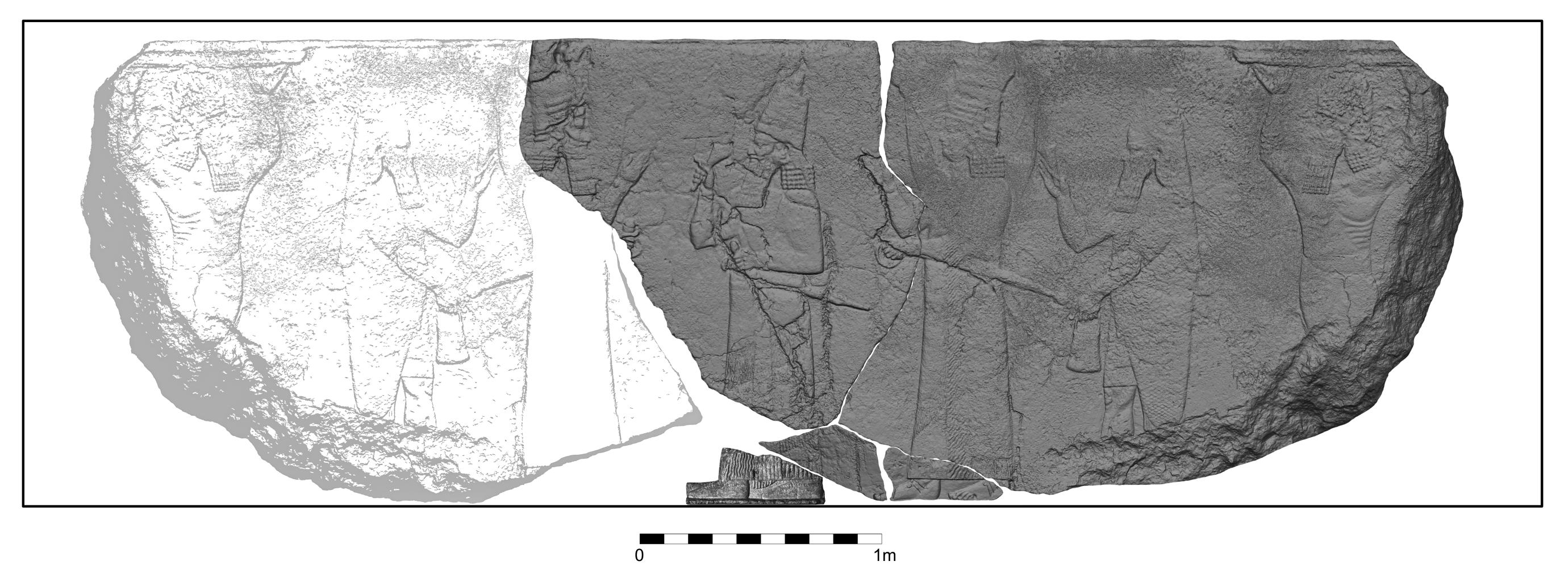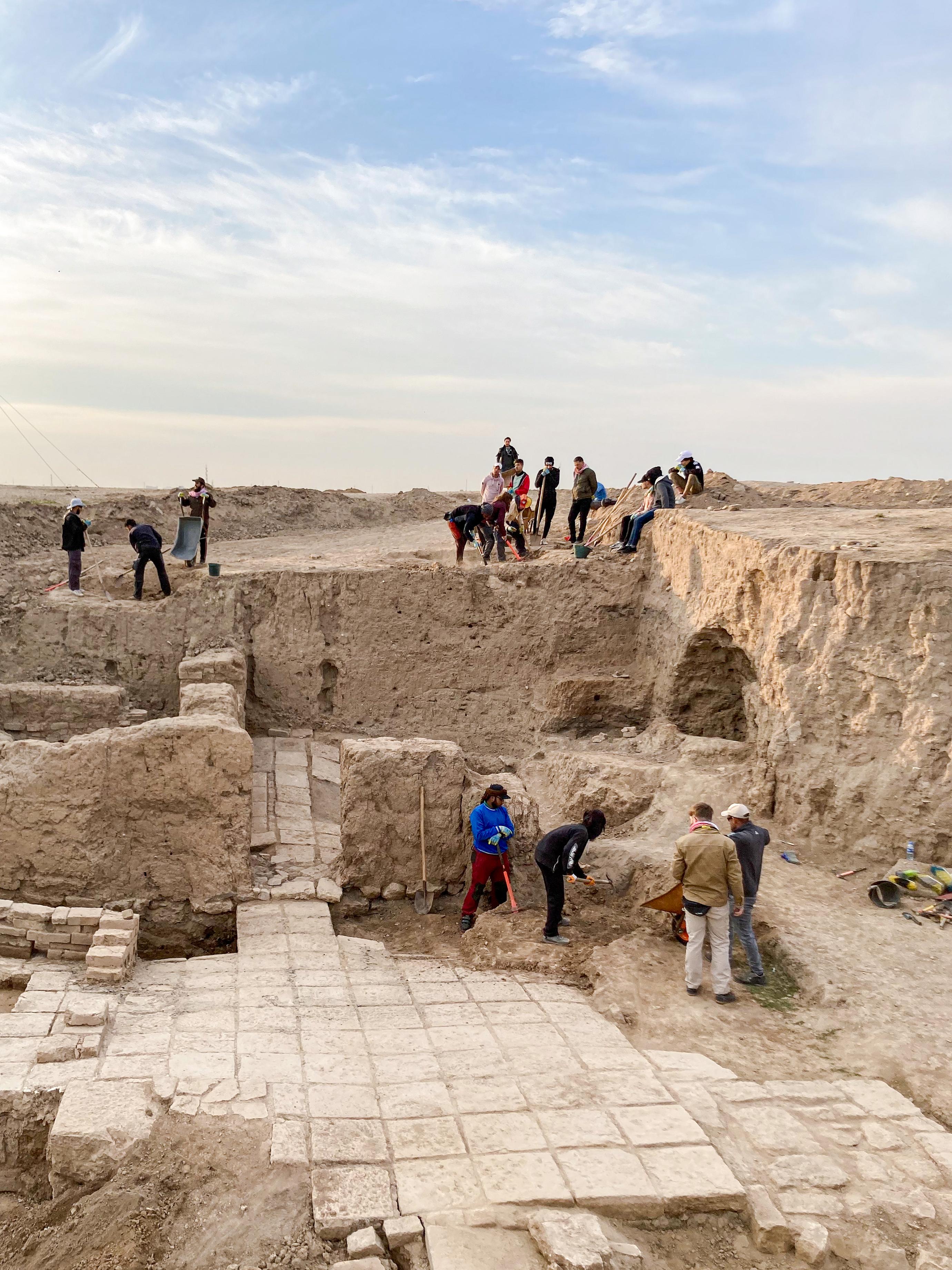Archaeologists have unearthed a peculiar ancient stone slab in Iraq depicting an Assyrian emperor from the seventh century BC surrounded by deities worshipped in the Mesopotamian civilisation.
The giant slab, measuring about 5.5m (16ft) long and 3m (10ft) wide, was discovered in the throne room of the North Palace of King Ashurbanipal in the ancient city of Nineveh, located near Mosul.
The ancient city is considered to be one of the most important parts of North Mesopotamia, becoming the capital of the Assyrian empire in the late eighth century BC under King Sennacherib.
Researchers who were part of the latest excavation found the stone slab “extraordinary”, not only for its size, but also for the scenes it depicted.
This is mainly because until now, religious relief images from the Assyrian Empire have not contained many deities.
“Among the many relief images of Assyrian palaces we know of, there are no depictions of major deities,” said Aaron Schmitt from the Institute of Prehistory, Protohistory and Ancient Near Eastern Archaeology.

Since 2022, excavations have been underway at a core sector of the North Palace built by King Ashurbanipal. The newly uncovered slab was found to contain at its centre Ashurbanipal, the last great ruler of the Assyrian empire, flanked by two supreme deities: the gods Ashur and Ishtar, the patron goddess of Nineveh.
It also contains a fish-like deity, who grants the gods and the sovereign salvation and life, as well as a supporting figure with arms raised, most likely to be restored as a scorpion-man.
“These figures suggest that a massive winged sun disk was originally mounted above the relief,” Dr Schmitt said.

Over the coming months, researchers hope to study the slab in detail, find the context behind its depictions, and publish the results in a scientific journal.
The slab was originally located at a site across from the main entrance to the throne room, which researchers say could be the most important place in the palace.
Fragments of the slab were uncovered in an earth-filled pit behind this niche.
Researchers suspect it was dug out during the Hellenistic period in the third or second century BC.
“The fact that these fragments were buried is surely one reason why the British archeologists never found them over a hundred years ago,” Dr Schmitt said.
Pope vows every effort to work for peace in regions where Christians persecuted, forced to flee
Cassie testifies in Sean 'Diddy' Combs sex trafficking trial. What to know about the star witness
400 Islamic State fighters are living in UK, claims bombshell report
Turkey says it is closely monitoring PKK disbandment to secure peace
Child with metal detector finds nearly 200-year-old shipwreck
A new discovery is rewriting the history of evolution by millions of years







